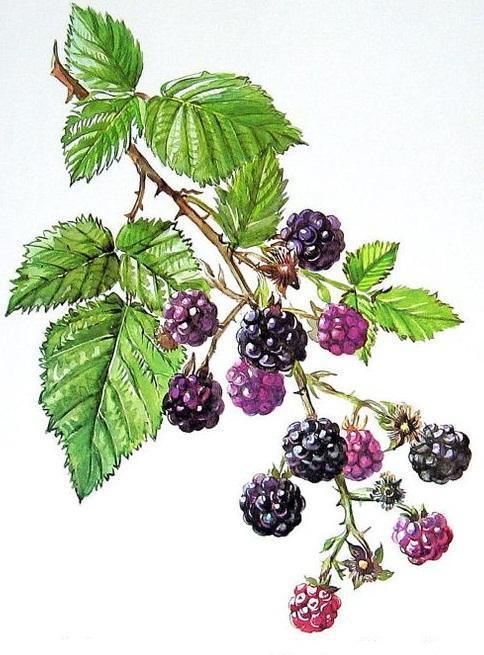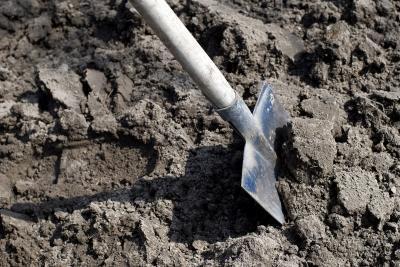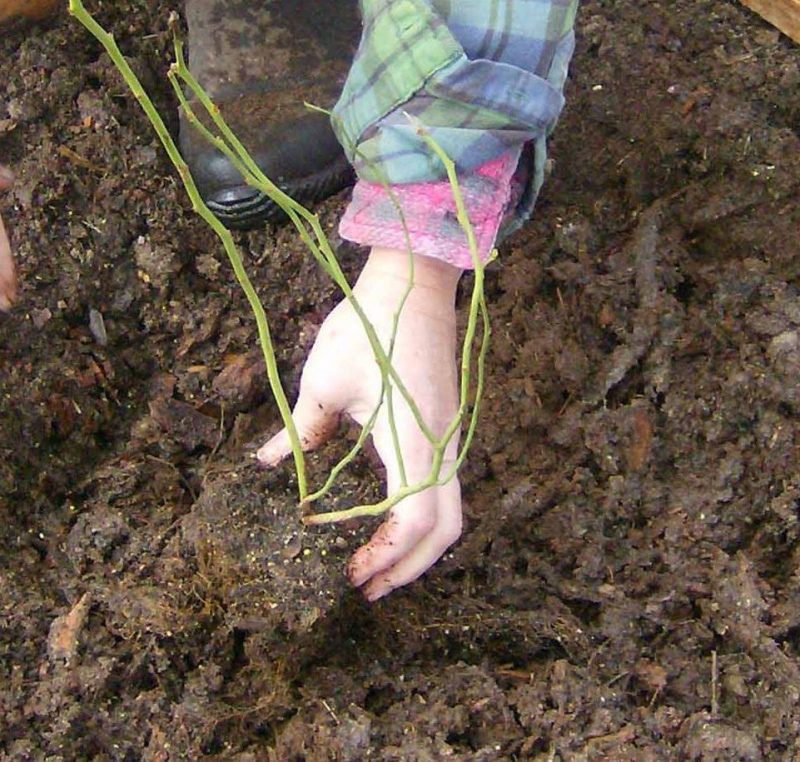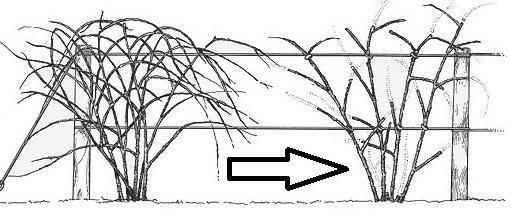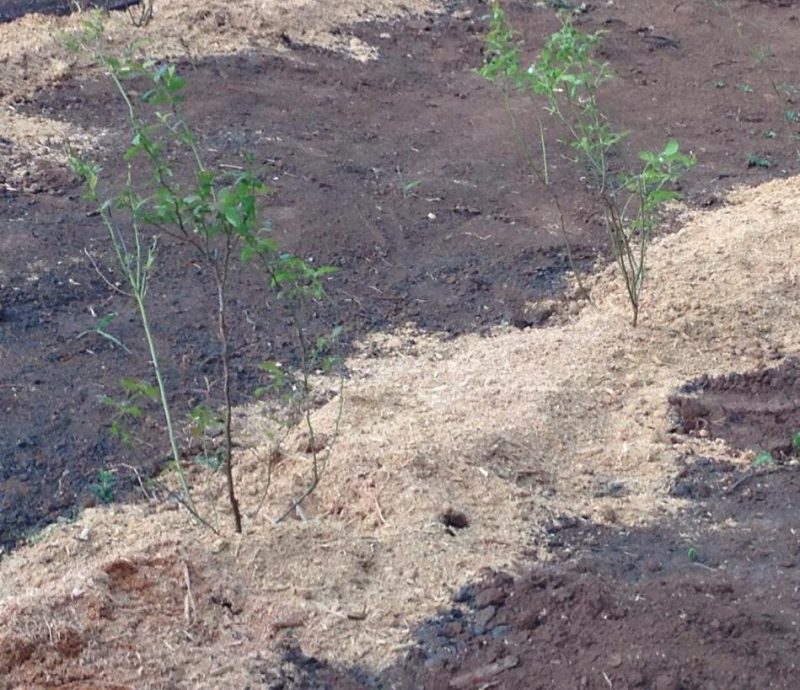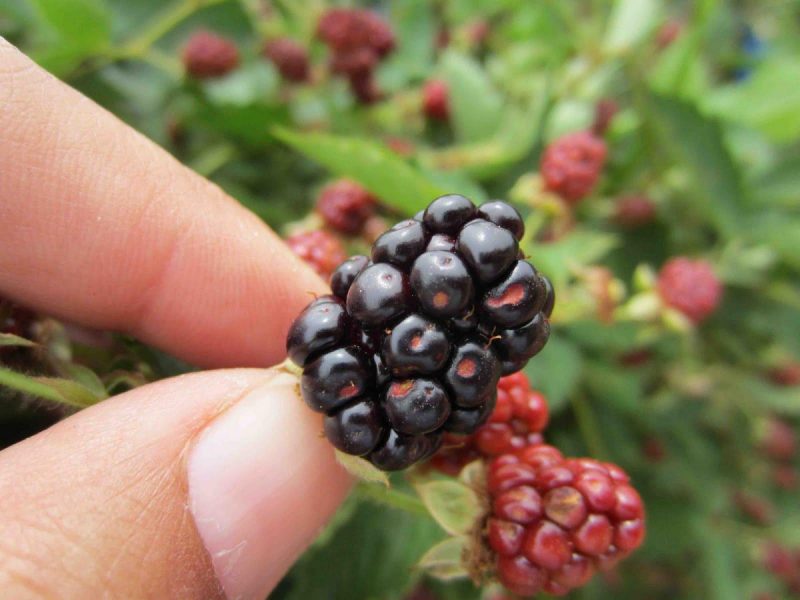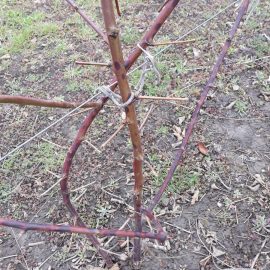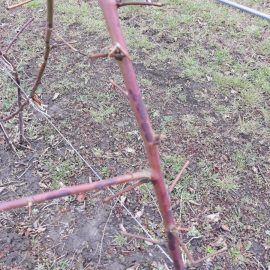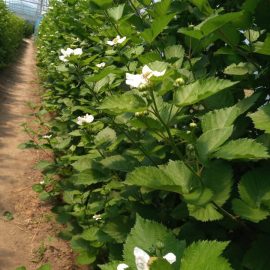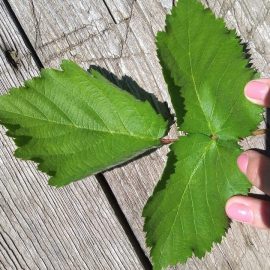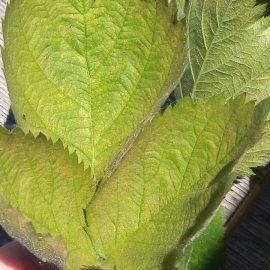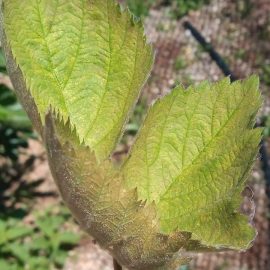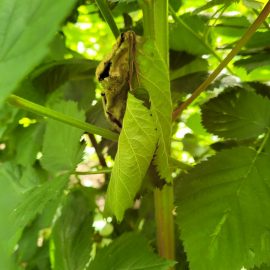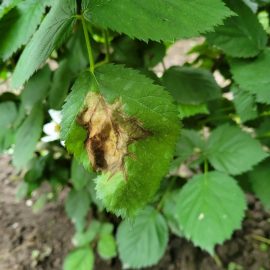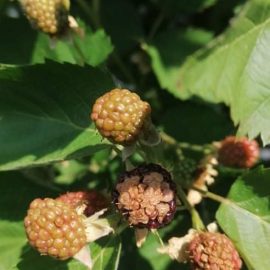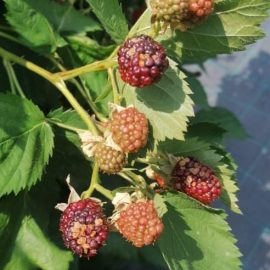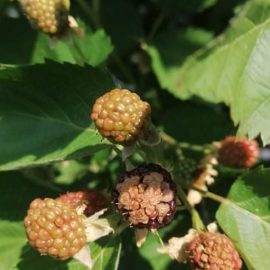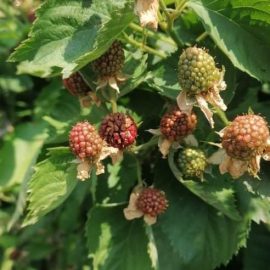Blackberry, planting, growing and harvesting
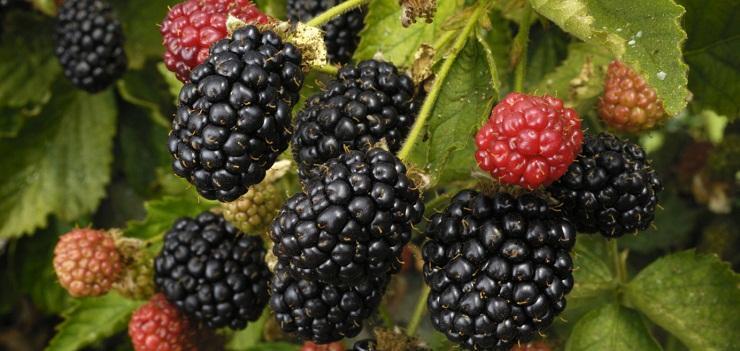
Blackberry (Rubus fruticosus) is a fruit-bearing shrub that grows spontaneously in many geographical areas. Due to its tasty fruits, it has started to be cultivated. Blackberry plants are bushy, with erect or creeping branches. The fruits are tasty and can be eaten fresh or prepared in different forms (jam, syrup, etc.). Due to their complex content of mineral substances, blackberries are recommended in the diet of people suffering from anemia, lung disease, liver or gallbladder disease. Fruits are rich in sodium, calcium, magnesium, iron, potassium, carbohydrates, proteins, organic acids, and vitamins (A, D, C, B6, B-12).
Botanical characteristics
The root system is strong and well-developed, reaching into the soil up to 0.5 m deep. The adventitious buds on the root ensure the restoration of the aerial part and the blackberry propagation by root suckers. The branches are frequently arched towards the base. Rubus caesius is covered with thorns, while Rubus fruticosus does not present thorns. The leaves are imparipinnate compound, with 3-5 leaflets. The flowers are hermaphroditic, white to light pink. The fruit is a shiny black polydruple, which when ripe falls off with the receptacle.
Environmental requirements
One of the limiting factors of blackberry cultivation is the air temperature, both during vegetation and the dormancy period. The varieties without thorns withstand temperatures as low as -15 ℃, and those with thorns withstand temperatures of -20 ℃. During the vegetation period, the blackberry plants do not tolerate heat, and temperatures over 34℃ can induce qualitative depreciation of the fruits. Blackberry has high light requirements, and for proper growth and development, it needs at least 13 hours of light per day.
Due to the well-developed root system, blackberry plants are resistant to drought. However, the highest yields are obtained in areas with annual rainfall exceeding 700 mm. Excess soil moisture causes root suffocation. Also, blackberry plants are sensitive to draughts, which causes dehydration and frost susceptibility and can depreciate the fruit during their ripening. For this reason, it is important to install shelterbelts around the crop. The most suitable soils for blackberries are semi-heavy, clayey-sandy, deep, well-aerated, and fertile.
Soil preparation
For blackberry cultivation choose a flat or gently sloped land. If there are spontaneously grown blackberry plants around the plot, they must be removed. Land preparation starts by removing all plants and plant debris from the previous crop, and if the land is heavily infested with weeds, you can apply a non-selective herbicide. Level the land, if necessary, taking into account the slope of the land. If planted in spring, soil preparation should be carried out in autumn before frost. In case of autumn planting (recommended), prepare the soil 2 months before planting.
Recommended products
-
You can find products on a different store
Change Store -
You can find products on a different store
Change Store -
You can find products on a different store
Change Store -
You can find products on a different store
Change Store -
You can find products on a different store
Change Store -
You can find products on a different store
Change Store -
You can find products on a different store
Change Store -
You can find products on a different store
Change Store -
You can find products on a different store
Change Store -
You can find products on a different store
Change Store -
You can find products on a different store
Change Store -
You can find products on a different store
Change Store -
You can find products on a different store
Change Store -
You can find products on a different store
Change Store -
You can find products on a different store
Change Store -
You can find products on a different store
Change Store -
You can find products on a different store
Change Store -
You can find products on a different store
Change Store -
You can find products on a different store
Change Store -
You can find products on a different store
Change Store -
You can find products on a different store
Change Store -
You can find products on a different store
Change Store -
You can find products on a different store
Change Store -
You can find products on a different store
Change Store
It is recommended to till the soil to a depth of 50-60 cm, to loosen the deep layers of soil, immediately after clearing the land, followed by deep plowing at 35-40 cm.
Basic fertilization
It is done with well-decomposed manure, administered in the planting pit. When tilling the soil, you can apply phosphorus and potassium fertilizers in variable quantities, depending on the soil supply. The mineral content of the soil can be determined by soil analysis.
After the soil preparation, the next step is to make the pits, measuring 30 x 30 x 30 cm.
For precise planting, the soil should first be staked, which is used to mark out the future rows.
Planting
Planting can be done in autumn, after leaf fall, or in early spring, just after the thaw. Autumn planting comes with many advantages. The main method of setting up the plantation is by root cuttings, purchased from specialized plant nurseries or research stations. The planting material should be carefully inspected and the poorly developed ones or the ones with signs of infections should be removed.
Before planting, prune the planting material by removing injured roots and reducing the roots to 15 cm in length. The roots should be placed in a slurry of yellow soil, cattle dung, and water to encourage the shrubs to grip. As the blackberry roots dehydrate easily, they must be kept in a pot of water for a few hours before planting.
Planting operation
30x30x30 cm planting pits or 30 cm deep planting ditches will be made manually or with drills. The land can be picketed beforehand, an operation through which the rows are marked on the field.
At the base of the pit add a mixture of 50% fertile topsoil (removed from the pit surface) + 50% well decomposed manure. The roots should be placed flat on the bottom layer of the pit, covered with topsoil, and compacted. After planting, irrigate and make a 10-12 cm high soil mound. Planting distances in commercial plantations are 2.5-3 m between rows and 1.2-1.5 m between plants per row, depending on the vigor of the varieties grown.
Maintenance work
To facilitate maintenance work and harvesting, it is recommended to trellis the blackberry plantation. One efficient system consists of trellises and wires. The trellises must be placed 8 m apart and 60 cm deep and the wires must be attached to them to support the shrubs. In smaller plantations, the stems can be tied directly to the poles.
Pruning
The blackberry has a lot of vegetative growth that crowds the plant, thus favoring the appearance of diseases and pests. For this reason, the vegetative growth must be controlled by pruning.
Recommended products
-
You can find products on a different store
Change Store -
You can find products on a different store
Change Store -
You can find products on a different store
Change Store -
You can find products on a different store
Change Store -
You can find products on a different store
Change Store -
You can find products on a different store
Change Store -
You can find products on a different store
Change Store -
You can find products on a different store
Change Store -
You can find products on a different store
Change Store -
You can find products on a different store
Change Store -
You can find products on a different store
Change Store -
You can find products on a different store
Change Store -
You can find products on a different store
Change Store -
You can find products on a different store
Change Store -
You can find products on a different store
Change Store -
You can find products on a different store
Change Store -
You can find products on a different store
Change Store -
You can find products on a different store
Change Store -
You can find products on a different store
Change Store -
You can find products on a different store
Change Store -
You can find products on a different store
Change Store -
You can find products on a different store
Change Store -
You can find products on a different store
Change Store -
You can find products on a different store
Change Store
Immediately after planting, choose the most vigorous stem, and shorten it to 15-20 cm from the ground. Remove the other stems by pruning as close to the ground as possible.
In the spring of the second year, choose 2-3 vigorous stems that will bear fruit and cut back to 170-180 cm. Remove the lateral growth at the base of these stems completely, so as not to crowd the bush in the lower part. Shorten the lateral shoots at the top of the stems to 25 cm. During the growing season, choose 5-6 vigorous stems to bear fruit the following year.
Each year’s fruiting pruning consists of choosing 4-6 vigorous fruiting stems, which should be shortened to 170-180 cm and whose side branches should be cut at 25-30 cm. The rest of the stems, as well as those that have borne fruit in the previous year, should be removed from the base.
All pruning should be carried out in spring. The large number of stems creates a microclimate in winter that reduces the effects of wind and frost, and pruning in spring (March-April) allows a more efficient choice of healthy stems.
Irrigation and fertilization
To reach maximum production capacity, the blackberry plants need irrigation and additional fertilisation. In areas where the water requirement (minimum 700 mm/year) is not provided by rainfall, apply 4-5 irrigations with norms of 300-400 cubic metres/ha. The first fertilization should ideally be done two years after planting with manure or NPK complex fertilizer. After this, fertilization should be carried out annually and the dose reduced by half. Fertilisers are best used if applied in autumn. Also, you can apply foliar fertilizers.
Recommended products
-
You can find products on a different store
Change Store -
You can find products on a different store
Change Store -
You can find products on a different store
Change Store -
You can find products on a different store
Change Store -
You can find products on a different store
Change Store -
You can find products on a different store
Change Store -
You can find products on a different store
Change Store -
You can find products on a different store
Change Store -
You can find products on a different store
Change Store -
You can find products on a different store
Change Store -
You can find products on a different store
Change Store -
You can find products on a different store
Change Store -
You can find products on a different store
Change Store -
You can find products on a different store
Change Store -
You can find products on a different store
Change Store -
You can find products on a different store
Change Store -
You can find products on a different store
Change Store -
You can find products on a different store
Change Store -
You can find products on a different store
Change Store -
You can find products on a different store
Change Store -
You can find products on a different store
Change Store -
You can find products on a different store
Change Store -
You can find products on a different store
Change Store -
You can find products on a different store
Change Store
Pest contol
The phytosanitary condition of shrubs is an important link in the culture of the blackberry. The shrub can be attacked by several diseases that can compromise production, and in severe cases can destroy the plantation.
Weeds control
Being that Blackberry does not tolerate competing plants, for this reason, the interval between rows can not be grown with other plants. To keep the soil clean, apply 2-3 hoeings each year: in autumn, at a depth of 10 cm, and during the vegetation period, at a depth of 5-6 cm. If the soil is heavily infested with weeds, you cand apply specific herbicides. It is not recommended to use herbicides in the first 2 year!!! To reduce water evaporation and to prevent weeds development, the soil can be covered with straw or polyethylene foil.
Recommended products
-
You can find products on a different store
Change Store -
You can find products on a different store
Change Store -
You can find products on a different store
Change Store -
You can find products on a different store
Change Store -
You can find products on a different store
Change Store -
You can find products on a different store
Change Store -
You can find products on a different store
Change Store -
You can find products on a different store
Change Store -
You can find products on a different store
Change Store -
You can find products on a different store
Change Store -
You can find products on a different store
Change Store -
You can find products on a different store
Change Store -
You can find products on a different store
Change Store -
You can find products on a different store
Change Store -
You can find products on a different store
Change Store -
You can find products on a different store
Change Store -
You can find products on a different store
Change Store -
You can find products on a different store
Change Store -
You can find products on a different store
Change Store -
You can find products on a different store
Change Store -
You can find products on a different store
Change Store -
You can find products on a different store
Change Store -
You can find products on a different store
Change Store -
You can find products on a different store
Change Store
Blackberry harvesting
The fruits ripening happens in stages, for 20-30 days. Over this period, blackberries can be harvested once every 3-4 days. Harvesting should be done in the morning (after the dew has evaporated) or in the evening. The fruits should be detached manually from the plant with the receptacle, without putting pressure on the fruit. After harvesting, blackberries must be handled with caution, as they are very sensitive to mechanical shocks. Blackberries have high perishability, being that, the fruits can not be stored for more than a few days.














































































































































































































































































































































































































































